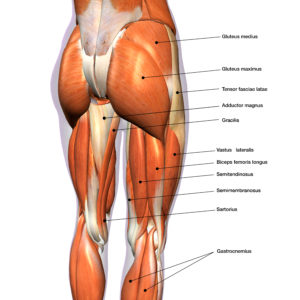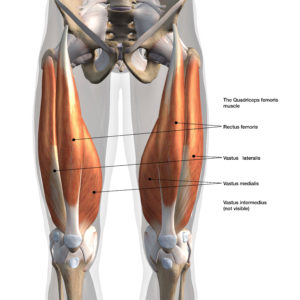We all know that exercising is important. There are multiple recommendations from the CDC and the American Heart Association that a person should get 150 minutes of moderate-intense activity and 2 days of muscle strengthening activity per week. Physical activity can help lower the risk of heart disease, stroke, diabetes, high blood pressure, dementia, as well as improve sleep, cognitive and memory function, and bone health. Regarding bone health, one might ask, “how does exercise improve bone, joint and ligament health?”
 Maintaining a healthy weight helps keep pressure off your knees. For every pound of weight you carry, your knees will have 4 more pounds of force on them during daily activity. Having strong, flexible muscles is the best way to keep knees healthy and prevent injury or further injury, especially the quadriceps muscles on the front of your thighs. Daily exercising helps your knees with support, flexibility, stability, and shock absorption. When the muscles in front of your thigh (quadriceps) and back of your thigh (hamstrings) are strong they help your knee joint absorb shock. Research has shown that exercising regularly helps in building and maintaining healthy bones, along with strengthening your muscles which can help reduce pain and prevent surgery. Osteoporosis or weakening of the bones can be significantly improved or prevented with resistance training (weightlifting) and exercise in general.
Maintaining a healthy weight helps keep pressure off your knees. For every pound of weight you carry, your knees will have 4 more pounds of force on them during daily activity. Having strong, flexible muscles is the best way to keep knees healthy and prevent injury or further injury, especially the quadriceps muscles on the front of your thighs. Daily exercising helps your knees with support, flexibility, stability, and shock absorption. When the muscles in front of your thigh (quadriceps) and back of your thigh (hamstrings) are strong they help your knee joint absorb shock. Research has shown that exercising regularly helps in building and maintaining healthy bones, along with strengthening your muscles which can help reduce pain and prevent surgery. Osteoporosis or weakening of the bones can be significantly improved or prevented with resistance training (weightlifting) and exercise in general.
Hip pain is experienced by about 15% of people over the age of 65. Inactivity as we get older can cause the loss of bone making them weak and fragile over time, a condition called osteoporosis. Joint deterioration, arthritis, and injury can cause pain and stiffness that restrict mobility and impact the quality of life. The good news is that daily exercise can significantly improve pain and strengthen your hips. Healthy hips are critical for standing, sitting, walking, running, bending and all other motions throughout the day. Targeted exercises that build strength in your tendons, ligaments and muscles that help your hip move, play an important role in knee alignment and can improve knee and leg pain.
condition called osteoporosis. Joint deterioration, arthritis, and injury can cause pain and stiffness that restrict mobility and impact the quality of life. The good news is that daily exercise can significantly improve pain and strengthen your hips. Healthy hips are critical for standing, sitting, walking, running, bending and all other motions throughout the day. Targeted exercises that build strength in your tendons, ligaments and muscles that help your hip move, play an important role in knee alignment and can improve knee and leg pain.
Whether you are bothered by joint pain, want to prevent injuries, or preserve your mobility, seeing an orthopedic surgeon when having persistent pain is important. The pain may be resolved with specific exercises and seeing a physical therapist. Keep in mind that most joint conditions can usually be treated conservatively without surgery. However, ignoring symptoms can lead to progressive joint deterioration and decrease the likelihood of benefiting from conservative treatment. Don’t wait and live with pain.

Dr. Mitch Wagner
Orthopedic Surgeon



